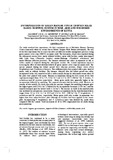| dc.contributor.author | Gachene, CKK | |
| dc.contributor.author | Mureithi, JG | |
| dc.contributor.author | Anyika, F | |
| dc.contributor.author | Makau, M | |
| dc.date.accessioned | 2013-06-30T11:14:12Z | |
| dc.date.available | 2013-06-30T11:14:12Z | |
| dc.date.issued | 2000 | |
| dc.identifier.citation | Incorporation of green manure cover crops in maize based cropping system in semi -arid and sub-humid environments of Kenya | en |
| dc.identifier.uri | http://www.kainet.co.ke/fileadmin/publications/Legume_Project/Legume2Conf_2000/19.pdf | |
| dc.identifier.uri | http://erepository.uonbi.ac.ke:8080/xmlui/handle/123456789/42898 | |
| dc.description.abstract | The study involved two experiments; the first experiment was at Machakos Farmers Training
Centre (semi-arid) while the second was at Kabete Campus Field Station (sub-humid). The aim
of the first experiment was to assess the effect of different residue management practices using
green manure cover crop (GMCC) on maize yield. The treatments, which were repeated during
the subsequent seasons were: maize without fertiliser, maize with fertiliser, maize intercropped
with Lima bean (Phaseolus lunatus), maize+Sunhemp (Crotalaria ochroleuca) and
maize+Mucuna (Mucuna pruriens). The biomass obtained was either incorporated or left as
surface mulch or removed during the subsequent seasons. The second experiment aimed at
assessing the effect of short-duration fallows of green manure cover crops on maize yield. The
species planted during the fallow period were Mucuna pruriens, Purple vetch (Vicia
benghalensis) and Crotalaria ochroleuca. Two additional plots were planted with a pure stand of
maize, with or without fertiliser. The biomass obtained after the fallow period was either
incorporated in the soil, removed or left as surface mulch during the subsequent season when all
the plots were planted with maize. Biomass accumulation during the first season of the first
experiment ranged from 2.8 to 5.9, 5.6 to 18.5 and 11.5 to 20.9 t DM ha-1 for P. lunatus, C.
ochroleuca and M. pruriens respectively. Maize grain yields were generally higher in the
incorporation followed by mulching. The removal treatment had the lowest yield. However, in
seasons of low rainfall, the trend especially for mucuna changed, the mulching treatment gave
the highest grain yield (4.01 t ha-1) followed by the incorporation treatment (1.90 t ha-1) and the
removal treatment gave the lowest yield (1.51 t ha-1). The increase in yields in the mulched plots
was attributed to soil moisture conservation. Biomass accumulation for the short duration fallows
ranged from 2.0 to 15.6, 11.2 to 18.0 and 15.6 to 20.0 t DM ha-1 for V. benghalensis, C.
ochroleuca and M. pruriens, respectively. Maize grain yield after residue incorporation was
higher than from maize+fertiliser plots although no fertiliser had been applied in the former
plots. Incorporating V. benghalensis and C. ochroleuca more than doubled the yields when
compared with the control. Yield increments of 16 to 58% compensated loss of yields during
green manuring | en |
| dc.language.iso | en | en |
| dc.subject | Legume green manure | en |
| dc.subject | Improved fallow | en |
| dc.subject | Biomass | en |
| dc.subject | Soil fertility | en |
| dc.subject | Maize yield | en |
| dc.title | Incorporation of green manure cover crops in maize based cropping system in semi -arid and sub-humid environments of Kenya | en |
| dc.type | Article | en |
| local.publisher | Department of Soil Science, University of Nairobi, | en |
| local.publisher | Kenya Agricultural Research Institute, National Agricultural Research Laboratories | en |

